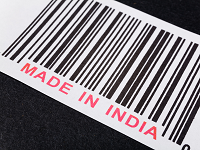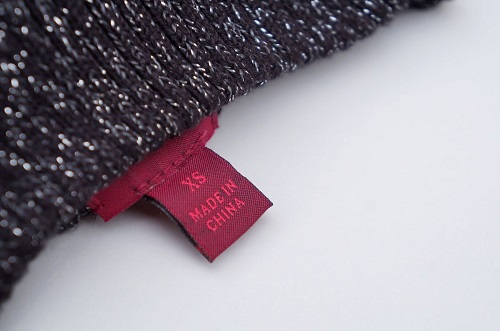FW
Leather goods and footwear exporters in Bangladesh are depressed with a 22 per cent decline in shipments in the just-concluded fiscal year due to the ongoing pandemic. As per Export Promotion Bureau (EPB) stats, leather exporters exported products worth $998 million in fiscal 2019-20, Of the country's total exports, leather footwear earned $779 million while other leather goods accounted for $221 million and rawhide sales $98.31 million. This is owing to the fact that many of the country’s export destinations like US, Italy, Spain, UK and Germany are currently under lockdown.
As the Bangladeshi government has set a revenue target of $5 billion in 2021 through the export of leather goods, the Leather Goods and Footwear Manufacturer & Exporter's Association of Bangladesh (LFMEAB) has urged the EPB to withdraw source tax on export subsidy to help the industry recover amid the coronavirus fallout.
On October 30, 2019, Prime Minister Sheikh Hasina assured that financial incentives for the leather goods industry would continue for at least the next five years to enable the country to achieve its export targets from the sector. However, the sector only enjoys a 15 per cent cash incentive on shipments. Hence, it fails to make it big internationally even though the country has an abundance of rawhide and a skilled workforce.
According to a survey from Nationwide YouGov and SafetyCulture, around 71 per cent of American consumers would not feel comfortable shopping in a physical retail store over the next three months. Around 57 per cent of the nearly 1,200 shoppers surveyed in the US said businesses making a real-time list of cleaning and disinfecting activities completed hourly throughout the day public would increase their trust and confidence in that business.
Additionally, 53 per cent said businesses that publicly display a list of daily safety procedures being undertaken in its public areas, with the completion status publicly shown, would also increase trust and confidence. The US-based research was released as part of the SafetyCulture Safely Back to Business initiative, a program designed to support companies globally at a time when safety has become the world’s top business priority. The company has digitized guidance from governments and other industries into fully customizable checklists. The more than 100,000 checklist templates are currently available online to support businesses in their efforts to protect customers and staff from exposure to COVID-19.
An ongoing report by Transparency Market Research says, the global polyester staple fiber market is expected to reach $34.546 billion by 2025. The market is flooded with new entrants who are embracing procedures, for example, mergers, coordinated efforts, and organizations. So as to keep up their strength in the market the set up players are getting different little and medium scale organizations. This enables the players to grow their asset banks and generation limit with further outcomes in better future in global polyester staple fiber market.
The global market has been arranged based on end use into home outfitting, individual consideration and cleanliness, clothing, car, filtration, individual consideration and cleanliness, and development. Among these, the clothing fragment is evaluated to represent a significant portion of the worldwide market in the coming years. The appeal for polyester staple fiber for the assembling of various kind of attire is one of the key components evaluated to support the development of this fragment. Moreover, the home outfitting and car portions are relied upon to observe significant development over the figure time frame.
Global polyester staple fiber market is focused in nature and is anticipated to observe noteworthy ascent in the degree of rivalry in the following barely any years, expresses another statistical surveying study by Transparency Market Research. Key market players are concentrating on improvement of new techniques to hold their driving situation in the polyester staple fiber showcase over the globe. What's more, advancements and improvements in the market are evaluated to support the general development of the market in the coming barely any years.
A group of workers’ rights organizations has accused fashion titan C&A of violating workers rights at one its supplier factories in Myanmar. Workers at the retailer’s Taiwanese Roo Hsing factory have been at loggerheads with their bosses since 2018 after an underhand attempt to implement a bonus system was caught out as a ruse to keep wages low.
C&A is a major buyer from the Taiwanese-owned Roo Hsing factory. The site’s bosses have seemingly looked to quash workers’ attempts to earn even just the country’s minimum wage, which was set at $3.30 in 2018, and will be the subject of new negotiations post COVID-19 as the wage is updated every two years. After years of grappling between the two parties, Clean Clothes Campaign Netherlands (SKC), Action Labor Rights (ALR) and SOMO are now urging C&A to address the supply chain violations.
Export of raw cotton by Pakistan during the first 11 months of FY20 declined by 9.93 per cent compared to raw cotton exports of the corresponding period of last year. Feom July 2019 to May 2020, the country exported around 12,776 metric tons of raw cotton worth $17.005 million, compared to its export of 11,790 metric tons of raw cotton worth $18.879 million in the same period of last year.
During the period under review, the export of cotton yarn declined by 13.12 per cent to 376,286 metric tons compared to the exports of 403,580 metric tons of cotton yarn in the same period of last year. Overall textile exports by the country during the eleven months of FY20 declined by 6.06 per cent and were recorded at $11.567 billion compared to $12.313 billion during the same period of last year.
The negative growth in textile sector exports was mainly due to the global spread of COVID-19 pandemic which has negatively affected foreign economies as well as the local economy.
During Kingpins24, representatives from the denim supply chain said the sector can shift to a more circular model through collaborations, investment in new technologies and refining its priorities. To achieve this, Malin Ekengren, Denim Designer and Consultant, advised denim companies to reduce their emphasis on revenue. She also urged the industry to seek more consumer and government support to achieve this.
Other representatives at the exhibition added, using recycled fibers to make new fabrics could be a starting point for mills that want to introduce circularity into their product design. Denim manufacturer Kaitex has been using recycled fibers in its production for the past 15 years. The company’s Vice President, advises manufacturers to find a way to manage the stewardship of the input variables to the point that we can return a large percentage of them in a circular fashion.
Sebla Onder, Sustainability Head,Orta Anadolu, views circularity as a group effort and referenced several of Orta’s latest collaborations, including the Alliance for Responsible Denim and Turkey Materials Marketplace, a cloud-based platform designed to facilitate cross-industry materials reuse among Turkish companies. According to her it is crucial to choose partners wisely. This year, the denim mill plans to shift its focus to its handprint.
The #PayUp Campaign, launched on March 30 by Remake, aims to force fashion brands to pay their dues, for the products that are either manufactured completely or in the process of manufacturing. According to Remake, this will impact almost 50 million garment workers. These factories are their sole source of living and in these challenging times, it is inhumane to not pay for their services.
Already, they are heavily underpaid, leaving no room for savings. The government has provided aid, but it isn’t sufficient for all the garment workers. Moreover, the current circumstances aren’t safe to work. Since launching the petition, 13 brands have agreed to pay for backorders, totaling upward of $600 million in Bangladesh. The campaign has helped unlock $7 billion in unpaid orders globally.
 A new study by Coresight Research indicates, with the negative sentiment prevailing amongst American consumers against Chinese products it could accelerate the end of ‘Made in China’ label. The survey conducted in early June indicated around 47.8 per cent of Americans are urging retailers to source fewer products from China. Around 39.7 per cent also expressed less willingness to buy Made in China products.
A new study by Coresight Research indicates, with the negative sentiment prevailing amongst American consumers against Chinese products it could accelerate the end of ‘Made in China’ label. The survey conducted in early June indicated around 47.8 per cent of Americans are urging retailers to source fewer products from China. Around 39.7 per cent also expressed less willingness to buy Made in China products.
Negative sentiments, government initiatives to hasten China exodus
There is a growing mistrust among US consumers about China-made products. In May this year President Trump allowed United States International Development Finance Corporation to finance companies producing emergency goods and services in the country. Legal experts are also incentivizing US companies with tax breaks and subsidies to uproot their China-based supply chains.
Along with growing negative sentiments amongst consumers, these initiatives could hasten the exit of many brands and retailers from China. Kearney’s most recent US Reshoring Index notes a sharp decline in US manufacturing imports from China. The index states, between 2018 and 2019, US imports from China dropped 17 per cent, and the shift has only accelerated as the trade war rages on. Latest data from the Office of Textiles and Apparel (OTEXA) also reveals a 41 per cent decline in US imports of textiles and apparel from China upto April this year, leaving China with only 30.53 per cent share of the global market. Of the $31 billion US imports that shifted from China to other Asian low-cost countries in the 2018-2019 period, around 46 per cent of went to Vietnam.
Reshoring Index notes a sharp decline in US manufacturing imports from China. The index states, between 2018 and 2019, US imports from China dropped 17 per cent, and the shift has only accelerated as the trade war rages on. Latest data from the Office of Textiles and Apparel (OTEXA) also reveals a 41 per cent decline in US imports of textiles and apparel from China upto April this year, leaving China with only 30.53 per cent share of the global market. Of the $31 billion US imports that shifted from China to other Asian low-cost countries in the 2018-2019 period, around 46 per cent of went to Vietnam.
Global restructuring remaps supply chains
A new Asian trade balance is taking hold with companies restructuring their global supply chains with an eye toward increased resilience, as well as lower risks and costs. This restructuring is also prompting companies to ramp up their supply chain remapping efforts.
The most recent example of this is German footwear brand Von Wellx which plans to move all of its production from China to India. Apple is also planning to move 20 percent of its production from China to India while. Japanese consumer goods company Iris Ohyama has received a government subsidy to move its manufacturing from China and to Japan.
In future, more companies could move their production out of China, says Coresight Research. Hence, instead of paying attention to political issues, retailers and brands should focus on consumer demands and the importance they give to the sourcing of products.
 The Latin American luxury sector is in a vulnerable state. Latest Euromonitor projections estimate, personal luxury goods sector in countries such as Brazil, Mexico and Argentina is likely to contract by approximately 6 per cent, 4 per cent and 3 per cent respectively. The World Bank also estimates economic activities in Latin America and the Caribbean region to drop by 7.2 percent of GDP.
The Latin American luxury sector is in a vulnerable state. Latest Euromonitor projections estimate, personal luxury goods sector in countries such as Brazil, Mexico and Argentina is likely to contract by approximately 6 per cent, 4 per cent and 3 per cent respectively. The World Bank also estimates economic activities in Latin America and the Caribbean region to drop by 7.2 percent of GDP.
Hence, luxury players in this region now pin their hopes on new or revised free trade agreements (FTAs) between Latin American countries and the EU and US. FTAs may shield the luxury sector in these countries from the damage caused by the pandemic and consequent global recession. Some analysts even hope these FTAs could boost consumption.
Opportunity to for double digit growth
One of these deals the EU-Mercosur agreement offers Latin American luxury brands an opportunity to grow in double digits. Diego Stecchi, Managing Director, Luxury Retail Partners and Former Regional Director, Ferragama-Latin America, believes the agreement enables Latin American luxury sector to grow by around 30 per cent besides cutting tariff peaks of 35 per cent down to zero on clothing and textiles.
Partners and Former Regional Director, Ferragama-Latin America, believes the agreement enables Latin American luxury sector to grow by around 30 per cent besides cutting tariff peaks of 35 per cent down to zero on clothing and textiles.
However, the deal is currently mired in controversies due to Brazalian President Jair Bolsonaro's disregard for the Amazon rainforest. Bolsonaro’s controversial stance on a number of issues has made it unlikely for the agreement to be finalized in the near future.
Facilitating free trade in fashion
Like the EU-Mercosur FTA, the EU-Mexico FTA could also revive the confidence of Mexico's business partners, believes Luis Huacuja, Academic and Consultant- Politics and International Law. Not only would the deal facilitate free trade on all non-farming goods including fashion product but also enable European and Mexican firms to invest in each other’s markets including the luxury sector. The deal is likely to be commercialized within a year as it needs to be signed off by the European Parliament.
Deal with local taxes
Most of these FTAs aim at reducing tariffs in the luxury sector. However, they should also focus on the taxes in countries like Brazil, Argentina and Chile, says Paulo Chiele, Director, PRC Luxury Consultancy. Stecchi believes the elimination of local taxes will reduce production costs for luxury brands in these countries. However, brands should maintain prices and not lower them to preserve their value in consumer’s eye.
Another factor that complicates harmonization of prices in these countries is volatility of their currencies. With the pandemic making local currencies weaker, prices of luxury products are likely to rise by as much as 20 per cent in Mexico and 10 to 15 per cent in Brazil.
Boost product quality and e-commerce
For quicker recovery, luxury brands in Latin American countries should focus on growing their e-commerce operations, opines Stecchi. They should also emphasize on the quality of products, views Thiago Alonso de Oliveira, Chief Executive, JHSF Participações, the real estate firm behind Cidade Jardim in São Paulo and several other luxury shopping malls across Brazil. By nature, Latin Americans are indulgent shoppers, says Fabian Hirose, Strategy & Development Management Consultant. They like to enjoy their shopping experiences and their consumption culture cannot be eradicated so easily.
Textile Employees Union (INTUC) workers have been protesting against the National Textile Corporation (NTC) for not paying its management and mill staff their salaries during the lockdown. From March onwards, these mill workers have been paid only a fraction of their salaries and the management staff have not got their salaries for the month of June. This is despite the central government ordering all employers to pay full wages during the lockdown.
The annual budget for payment of salaries is Rs 350 crore, which means NTC requires Rs 29.16 crore monthly for salaries. There are 300 management employees and 7,200 mill staff working with NTC. In March, when the first lockdown was announced, the workers of NTC got only 75 per cent of their salaries. In April, they got 60 per cent and in May only 40 per cent of their salaries.
In March, the workers were only paid for the days that they worked. The average salary of a mill worker is Rs 8,000. They have not been paid for the month of June and are worried about the amount they will get this month. have been protesting in Tamil Nadu and Mumbai for full payment of the salary.












